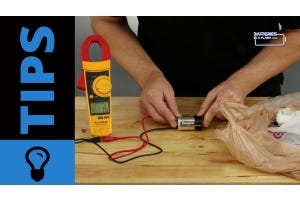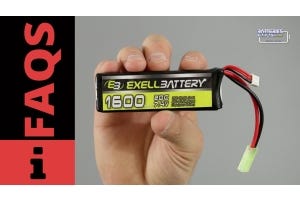How to Safely Pack Batteries for your Next Trip

People need batteries to power the large number of personal electronic devices that they enjoy using. However, since the power source provides electricity, people must use caution when traveling with them.
The Federal Aviation Administration’s Battery Safety Guidelines
To prevent fire related incidents, the Federal Aviation Administration, or FAA, has put several battery safety guidelines in effect. Furthermore, the Transportation Security Administration, or TSA, works with the FAA to avoid safety issues for airline passengers. As a result, each airport’s security staff is trained to identify safety issues involving batteries in the carry-on luggage and checked bags of travelers.
Batteries that can Travel in Carry-on Bags
In carry-on bags, passengers can transport dry cell alkaline batteries such as AA, AAA, C, D, button sized cell batteries and 9-volt. The security administrations also permit passengers to have dry cell rechargeable batteries in their luggage. For instance, passengers can bring nickel metal hydride and nickel cadmium. Lithium ion batteries are also allowed as they typically provide power for laptop computers. The agencies permit people to travel with lithium button cells and lithium metal batteries, which are in many cameras and other small electronic devices.
Travelers can store TSA approved batteries in their checked bags. However, it is safer to store them in carry-on luggage because the flight crew will be overseeing the cabin conditions. If a battery-instigated fire should start, then the traveler and crewmembers have access to the area.
Banned Batteries
People may not travel with car batteries, wet batteries or batteries that might spill. The TSA will permit an exception if a banned battery is powering a wheelchair or scooter. If a person is transporting a spare battery for an assisted device, then he or she must inform the aircraft operator to ensure proper packaging. Extra lithium batteries cannot travel in checked bags. Keep in mind that the FAA limits the transport of larger lithium ion batteries to two units.
Tips for Packing Batteries
When travelers need to bring extra batteries, the TSA advises them to place each power source in its own protective casing, package or plastic bag. Travelers can also cover each battery’s contact with tape to isolate the terminals and prevent short-circuiting. If a person intends to travel with an electronic device that operates from battery power in his or her luggage, then he or she should tape the power switch in the “off” position to ensure that it doesn’t accidently turn on during a flight.
Avoid placing batteries in tightly packed suitcases because extensive pressure may cause the power sources to overheat, which is a fire hazard. Furthermore, do not set heavy items on top of batteries, and pack sharp objects in a separate section of the suitcase.
Traveling with Battery Chargers
Travelers can pack their battery chargers in checked and carry-on bags. However, be sure to wrap the electrical cord tightly around the device. Also, don’t pack regular batteries in a battery charger because they are not manufactured to recharge and may become dangerous.
By practicing battery safety and packing the power sources carefully, people can avoid the possibility of creating a fire or other harmful situation.







